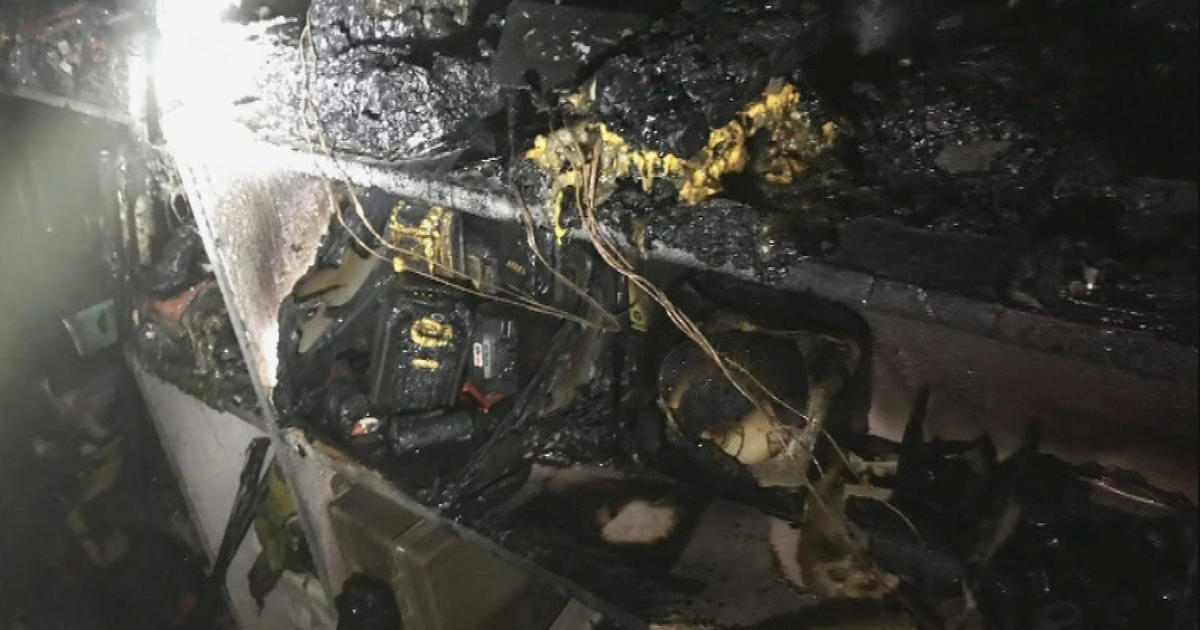Face Masks In Schools This Fall: Here's The Latest Massachusetts Guidance
BOSTON (CBS) -- It's back-to-school time in Massachusetts, and by now, families have likely heard the news: The state is implementing a universal face mask mandate, regardless of COVID vaccination status, in K-12 public schools through Oct. 1.
The mask requirement applies to all public school students ages 5 and above, staff and visitors who are inside school buildings. There are exceptions for students who can't wear a mask for medical reasons or behavioral needs.
The mask requirement does not apply when students are eating, drinking, or during mask breaks. Masks will be required for student-athletes and coaches during any indoor sports activities. Masks are also required on school buses, but not outside.
"Mask breaks" will be allowed during the day, preferably when students are outdoors or with the windows open.
As of October 1, the mandate would be lifted for middle and high school students if the school has a vaccination rate of at least 80%, but unvaccinated students would still have to wear masks.
CLICK HERE to check the vaccination rates among teenagers in your school district.
For Catholic school students, the Boston Archdiocese is following the state's guidance and requiring masks for all at the 69 schools in Eastern Massachusetts that it directly controls. The Archdiocese strongly recommends that other Catholic schools in the area take the same approach.
State education commissioner Jeffery Riley has said "I want to be clear that we are hopeful this will be a short term measure." Below is the full list of requirements that schools have to follow:
• Effective immediately, public school students (age 5 and above) and staff in all grades are required to wear masks indoors in schools, except as noted below. Masks are not required when outdoors. All visitors are also expected to wear a mask in school buildings.
• The mask requirement will be in place until at least October 1, 2021. The Commissioner will revisit the requirement in the near future to revise it as warranted by public health data.
• Masks should cover an individual's nose and mouth. For more information about appropriate mask use, please see:
https://www.cdc.gov/coronavirus/2019-ncov/downloads/cloth-face-covering.pdf
• It is strongly recommended that students younger than age 5 also wear a mask in school.
• Students and staff who cannot wear a mask for medical reasons, and students who cannot wear a mask for behavioral reasons, are exempted from the requirement. Face shields may be an option for students with medical or behavioral needs who are unable to wear masks or face coverings. Transparent masks may be the best option for both teachers and students in classes for deaf and hard of hearing students.
• The mask requirement applies when students and staff are indoors at school, except when eating, drinking, or during mask breaks.
• Mask breaks may occur throughout the day. If feasible, breaks should occur when the windows are open or students are outdoors. As a reminder, meals and outdoor recess provide built-in mask breaks for students and staff.
• Masks may also be removed indoors when necessary to participate in elective classes, such as the use of wind instruments in band. When traditional masks cannot be worn, districts should consider additional mitigations, such as the use of instrument masks (masks with a slit or hole cut for the mouthpiece) or bell covers, along with physical distancing or outdoor classes as feasible.
• Masks are required for any sports-related activity for student-athletes and coaches when indoors, in alignment with guidance provided by the Massachusetts Interscholastic Athletic Association (MIAA).
• Masks should be provided by the student/family, but disposable masks should be made available by the school for students who need them.
• By federal public health order, all students and staff are required to wear a mask on school buses.
• Whether and when a student should be disciplined for failure to wear a mask is a local decision, guided by the district's student discipline policy and the particular facts. Districts should consult with their legal counsel to address these matters. Districts should provide written notice to students and families about expectations and potential consequences, and are encouraged to use a progressive discipline approach. The mask requirement includes an exemption for students who cannot wear a mask due to medical conditions or behavioral needs. Further, some students with disabilities may need additional supports to wear masks and may need to be accommodated. Districts are encouraged to consider and implement alternatives before resorting to disciplinary exclusion. Keeping students connected with school is especially important this fall, as students return to school after a challenging school year.



